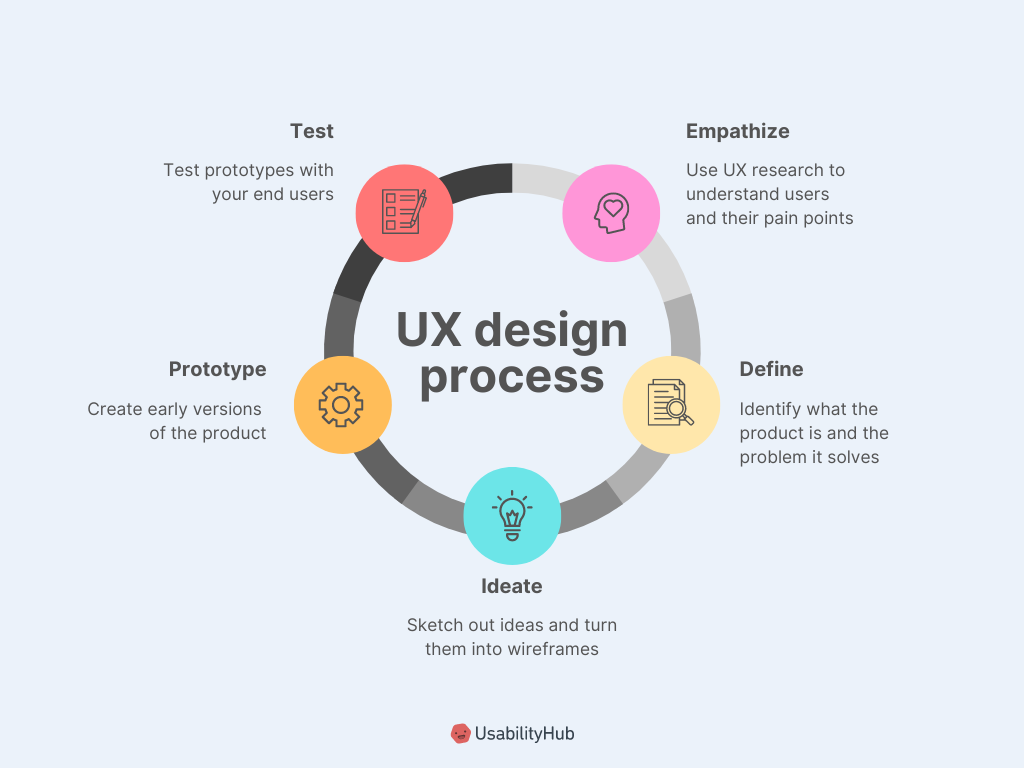With the ever-changing world, mobile phones have become an inseparable part of humans. With the new introductions of mobile applications, our screen time is increasing as well. Half of our free time is spent by us on our smartphones, which brings up some new ways of business for sharks out there.
Nowadays, there are many apps that are made for iOS users, Android users, or cross-platform apps that increase the engagement of customers in it. In the current competitive landscape, it's essential for any noteworthy business to establish a mobile app. If you manage a traditional business aiming to connect with mobile users, this guide will provide an extensive walkthrough of crafting your mobile application.
In this post, we shall break down the procedure and best practices for mobile app development:
Understanding Mobile Application Development
A mobile application, also known as a mobile app, is a type of software explicitly crafted to operate on mobile devices. The common devices that utilize these apps are smartphones and tablets. Mobile applications are readily available for download and installation from authorized platforms such as app stores or various online marketplaces.
Mobile applications stand out for their array of offerings optimized for mobile usage. They are ingrained with several features and functions suited specifically for mobile devices, and when you follow the step-by-step app creation guide, you can get what you want.
Preparing for Mobile App Development

It is not easy to build a mobile application, but if you make some effort and go step-wise, you can achieve what you want. Let us understand some of the best practices for mobile app development that a company must follow for the best results.
Choosing the Right Development Approach
There are four approaches that a company uses while developing a mobile application:
Native Applications (iOS and Android)
Native applications are types of mobile apps created specifically for a singular platform, such as iOS or Android. Programmers develop these apps using programming languages unique to the platform. Native apps are meant for direct installation on a user's device.
These applications are known for their high-efficiency performance and perfect integration with the device's hardware and software traits.
Hybrid Applications
In contrast, hybrid applications are mobile apps developed using universal web technologies, such as HTML5, CSS, and JavaScript. Upon creation, these apps are encased in a native app shell. This allows installation and operation on a user's device.
Developers prefer Hybrid apps for convenience; they can be created once and deployed on varying platforms.
Internet Based Mobile Applications or Web Apps
Web apps can be defined as mobile applications configured to run fully within a web browser on a mobile device. They basically function as mobile-friendly websites that users can easily access via a web browser on their mobile devices.
However, their responsiveness and the availability of features might not be on the same level as in native or hybrid applications.
Cross-Platform Application
This refers to an application that operates using a unified codebase, enabling it to function across varied platforms. Nowadays, there are many Customized Software Companies in the market that make customized applications for businesses so that they can focus on their core functions rather than wasting time on repetitive work.
Mobile Application Development Process
Designing the User Experience (UX)

Grasping the desires and inclinations of the user base enables companies to enhance the interactivity and appeal of a mobile application. The functionality, characteristics, accessibility, and value of an application are primarily shaped by UX design. Moreover, it is also influential in stimulating certain feelings and emotions experienced by users.
Developing the Mobile App
It should be noted that the Software Development Life Cycle (SDLC) can often be iterative, meaning some steps may intersect or repeat. The steps of mobile app creation are as follows:
- Inception: The basic step is to refine your ideas and finalize them. Firstly, you need to research the market and understand the use your app will offer its user. It helps in gaining confidence in your product by examining the market condition.
- Design: When designing your mobile application, it's important to carefully plan the user experience (UX). Try to include those features that will attract the young as well as the old generation. You can do this by keeping the user interface simple to use. These factors will significantly impact how users interact with your app.
- Construction phase: The application is built during this period. You need to builda prototype so that you can make others understand its uniqueness easily.
Testing and Quality Assurance
Quality Assurance (QA) refers to the series of testing and eliminating bugs done by the Android Development Companyso that the final product comes out to be the best in quality. Here, the efficiency of your product is tested like how Elon Musk tested his car window glass. But that was for free advertising. You should not keep such flaws in your product during launching.
After the development stage of your application, it is important to do the testing. This may include bug removal, reconstruction of some parts, etc.
Launching and Deploying the App
Deployment of a mobile app is the process of making your mobile application accessible to a group of testing audiences or the ultimate users. When the application is made for internal audiences to give their feedback, it involves launching the app for a limited number of people to get feedback for proper evaluation and feedback. In contrast, deploying the app to an external audience implies making the application available for end-users. This is the ultimate task that helps you to understand whether the mobile app has been accepted by the public or not.
Post-Launch Activities and Maintenance
Maintenance of mobile applications is a crucial segment in the process of app development. In this phase, developers undertake the task of assuring the app remains free of bugs. This stage mainly zeroes in on various areas - rectifying potential issues, enhancement of current features, advancing functionalities, and so forth, to meet user demands.
1. Extensive App Surveillance
With the appropriate maintenance and support services, monitoring the performance of every component in your mobile app is made effortless. These services facilitate watch-over hosting and third-party payment, server, analytics, app crash, and app feedback.
2. Enable Recent Upgrades
You can concentrate on regular app updates that work with various devices and operating systems. You are empowered to roll out the most recent versions, support new library updates, undertake operational-level improvements, revamp the app interface, refine current functions, boost app performance, and more.
3. Revamp the App Interface and User Experience
By considering user reviews and app store ratings, the development team can keep an eye on the user interface and user experience. They are able to pinpoint areas that require improvement as a result. They can offer workable ideas by evaluating which design components are most frequently employed or disregarded. This strategy makes sure that user wants and expectations are satisfied.
4. Deal with Potential Mistakes
Addressing bugs and vulnerabilities is one of the primary reasons for investing in mobile application maintenance services. You may find and fix problems that lead to app failures by routinely maintaining your app, which will ultimately enhance the overall code quality. Your developers can improve user experience and lessen frequent downtimes thanks to this.
Future Trends in Mobile App Development
The mobile app development process is evolving day by day. here are some future trends you need to look for.
- Customized Wearable Apps: These apps are specially created and optimized for wearable devices, giving you the comfort you require at your fingertips.
- Mobile wallets: These services provide a safe and practical way to conduct financial transactions right from your smartphone.
- Technology for beacons: Many software development services offer exact location services and close proximity marketing, boosting and improving client connection. The apps based on these approaches will grasp the market’s attention as they have many unsaid advantages if used in a legal way.
- Artificial Intelligence: Leveraging the power of AI, companies have started to create intelligent systems that learn, reason, and self-correct, revolutionizing how businesses operate.
- Predictive analysis: It is a valuable tool for forecasting future trends based on historical data. This insight empowers your business to make informed and strategic decisions.
Applications that use the cloud are now available, giving you convenient and safe access to your data whenever and wherever you need it. This provides you with all the flexibility required for an efficient workflow.
These are some of the few trends that will surely conquer the world with integrated latest technologies.
No matter what business sector you're in, the mobile app development industry has been profoundly modifying and reshaping business for some time now. By following the step-by-step app creation guide mentioned above, you can see that you will be passing with flying colors. Nearly all businesses must integrate the most recent trends in mobile app development and enhance their marketing approach to obtain momentum toward maximum growth and effectively engage their intended audience.


 Previous blog
Previous blog



